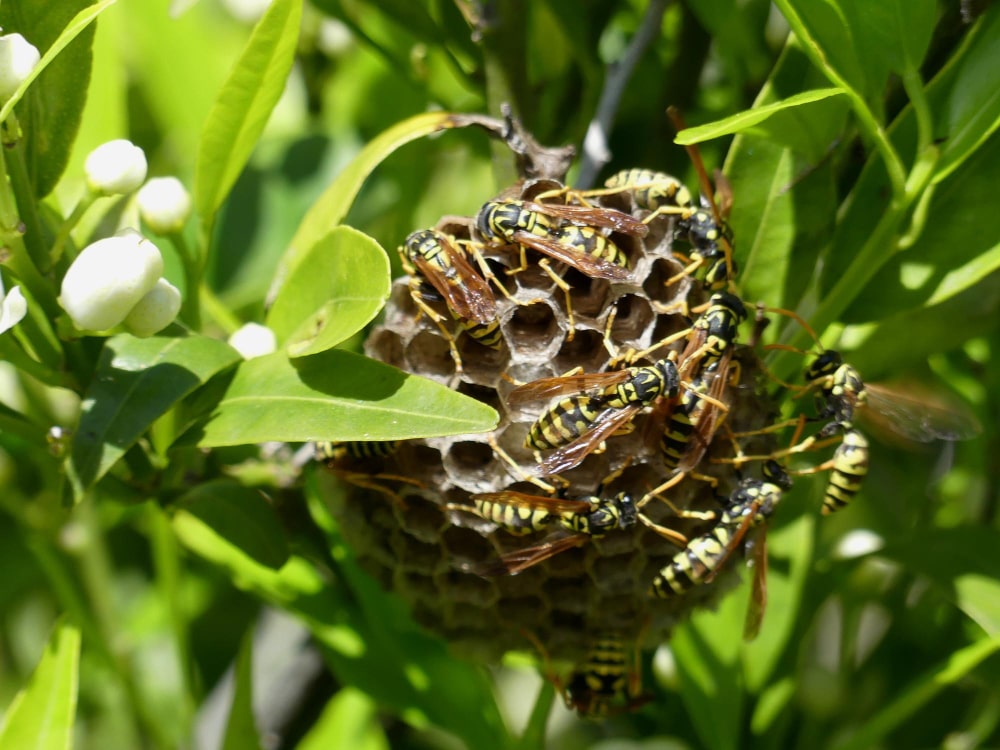Encountering a swarm of wasps can be more than just a nuisance; it can signal the presence of a wasp nest on your property. These stinging insects are known for their aggressive defence mechanisms, particularly when their nests are disturbed. This guide will walk you through the steps to safely identify and manage wasp nests.
Understanding Wasp Behaviour
Wasps are infamous for their ability to sting repeatedly, a trait that sets them apart from their bee relatives. They are generally non-confrontational but can become increasingly aggressive under certain conditions. Overcrowded nests and the warmth of the autumn season can make wasps more irritable. During this time, they are attracted to fermenting fruits, which can lead to heightened aggression and a greater likelihood of stings.
A Game of Observation
Wasps are versatile in their choice of nesting locations. They may choose sheltered spots like trees, lofts, under the eaves of roofs, sheds or even within your home. To locate a nest, observe the flight patterns of the wasps as this can often lead you to their home base. Exercise extreme caution, as getting too close can be dangerous making it time to call in the professionals.
Identifying Wasp Nests
Recognising the type of wasp and its nest is essential for proper management. Here’s a quick rundown:
- Yellow Jackets: These wasps often nest underground or in dark, secluded areas. Their nests can host a large colony of up to two thousand members.
- Hornets: Look for large, football-shaped nests with a smooth exterior and a single entrance. Hornets’ nests are typically found high above the ground.
- Paper Wasps: Their nests are easily identifiable by the open, hexagonal cells that hang from a single stalk, giving them an umbrella-like appearance.
- Honey Bees: Although not wasps, it’s important to distinguish their hives, which are made of waxy, yellow layers and tight hexagonal cells. Honey bees are a protected species and should not be disturbed.
Dealing with Wasp Nests Safely
Removing a wasp nest on your own can be extremely risky and is not recommended without the right equipment and expertise. And in some cases, accessing the nest may require climbing to high places. So for a safe and effective resolution, it’s always best to enlist the services of professional pest control company, such as CFPMS.
Safety First
The discovery of a wasp nest can be unsettling, but with the right knowledge and precautions, you can address the issue without harm. Prioritise the safety of yourself and others, and don’t hesitate to seek professional help when confronting these stinging foes. For assistance with wasp nest removal and expert advice, reach out to our pest control experts today!

